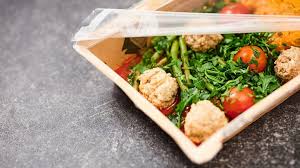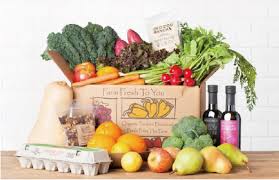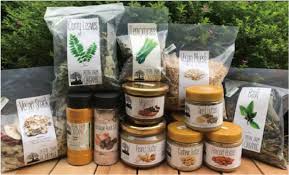Agricultural produce preservation relies on various packaging types, including flexible packaging like bags and pouches, primary packaging directly contacting the product, secondary packaging holding multiple units, and tertiary packaging for transport.
Materials used range from natural fibers like jute and cotton to synthetics like polypropylene and polyethylene. Other options include glass, plastic, paper, metal, and multi-material packaging.
Controlled and Modified Atmospheric Packaging (CAP and MAP)
The normal air composition contains 78% Nitrogen (N), 21% Oxygen (O2), 0.03% Carbon dioxide (CO2), and traces of other noble gases. Modified atmosphere packaging extends the shelf life of perishable and semi-perishable food products by changing the relative proportions of gases surrounding the produce.
Although Controlled Atmosphere (CA) and Modified Atmosphere (MA) are often used interchangeably, there is a precise difference between the two.
Controlled Atmosphere (CA) Storage in Agriculture
This refers to a storage environment where gas composition is precisely adjusted and maintained throughout storage and distribution of perishable foods.
Continuous monitoring and adjustment of gas levels are required, making the system practical mainly for refrigerated bulk storage or large container shipments. Improper control or accidental changes can turn potential benefits into damage.
Sensitivity varies by cultivar, location, and year. For example, low oxygen or high carbon dioxide can prevent proper ripening in tomatoes and increase chilling injury risk.
The margin between beneficial and harmful gas concentrations is small, so careful management is essential.
Read Also: 12 Medicinal Health Benefits of Oats (Avena Sativa)
Modified Atmospheric Packaging (MAP) for Agricultural Products

In MAP, precise gas composition control after sealing is not possible. Modified atmosphere forms inside the package either passively from the commodity’s respiration or actively by creating a vacuum and replacing it with a desired gas mixture.
Active packaging uses absorbers (scavengers) such as hydrated lime, activated charcoal, magnesium oxide for CO2, and potassium permanganate or phenyl methyl silicone for ethylene, often contained in sachets or impregnated materials.
Ideal gas levels for fruits and vegetables are usually 2-5% oxygen and about 3.8% carbon dioxide, which help extend shelf life. At 20-25°C, MAP can double shelf life, refrigeration alone can triple it, and the combination can quadruple it.
Common films for MAP include polyvinyl chloride (PVC), polystyrene (PS), polyethylene (PE), and polypropylene (PP). Advances in co-extrusion technology allow manufacturing films with designed oxygen transmission rates.
Vacuum Packaging in Agricultural Product Protection
Vacuum packaging creates a barrier against moisture, oxidation, dirt, UV rays, mechanical damage, fungal growth, and spoilage. This technology is especially relevant in tropical regions with high humidity.
The product is sealed in a vacuum bag, and if pressure damage is a concern, the package can be flushed with inert gases like nitrogen or carbon dioxide after evacuation.
Edible Packaging for Agricultural Produce
Edible films or coatings are thin layers of edible material formed on or between food components, making the package part of the food. Material selection depends on barrier properties to moisture and gases, mechanical strength, and resistance to microbial growth.
Materials include lipids, proteins, polysaccharides, or their combinations. Lipid coatings, such as animal or vegetable fats, reduce weight loss from dehydration by 40-70% during storage. Further research is needed to develop economical edible packaging with good performance.
Read Also: 12 Medicinal Health Benefits of Emilia Sonchifolia (lilac tasselflower)
Packing Techniques to Protect Agricultural Produce

Packing techniques should ensure
1. correct arrangement to minimize damage
2. avoidance of wounds during packing, which can lead to microbial infection
3. maintenance of hygienic conditions to prevent contamination. High levels of personal hygiene should be observed by handlers. Packing should be efficient to maintain the supply chain flow.
Procedures to Improve Packaging Effectiveness
1. Ventilation of Packages
Ventilation holes allow airflow to cool produce and prevent heat buildup from respiration, which is important in both ambient and cold storage conditions. Ventilation also helps disperse ethylene gas.
2. Cushioning Materials for Produce Protection
Cushioning fixes commodities inside packages to prevent movement damage. Materials vary and include wrapping paper, fiberboard, molded trays, foam sheets, bubble pads, shredded wood, or plastic liners.
Packaging must balance ventilation and sturdiness. Overfilling or loose packing causes bruising. Ethylene absorber sachets can slow ripening and decay in sensitive produce.
3. Handling at Wholesale and Retail Levels for Quality Maintenance
Handling should avoid roughness, minimize handling steps, and maintain low temperatures. Storage rooms must be clean and insulated. Produce with differing temperature or ethylene sensitivity should be stored separately.
Containers must be stacked carefully to avoid collapse. Sorting and discarding damaged produce improve market appeal. Climacteric fruits like bananas and tomatoes can be ripened on site using natural or controlled ethylene methods.
Appropriate temperature and humidity control in display areas helps preserve quality. Outdoor markets benefit from shading and wind protection. Keeping loss records helps improve future handling.
4. Unloading Practices for Agricultural Produce
Loading docks and hand trucks ease handling by reducing lifting and bending. Dock heights vary by vehicle type for optimal operation. Simple stairs also assist with loading and unloading.
5. Temporary Storage Temperature Control
Short-term storage should maintain commodity-specific temperatures, relative humidity between 85-95%, and ethylene below 1 ppm through ventilation or scrubbing to maintain quality.
6. Sorting and Repacking Procedures
Washing, trimming, bunching, and sorting may be needed at wholesale or retail levels. Workstations should minimize unnecessary movement for efficiency.
Repacking is sometimes required due to quality changes or uneven ripening. Sorting stations allow separation of ripe and unripe fruits, with rejects removed to improve quality.
7. Ripening Process of Fruits
Ripening develops the desirable flavor, color, and texture of fruits. Climacteric fruits can continue ripening after harvest.
Do you have any questions, suggestions, or contributions? If so, please feel free to use the comment box below to share your thoughts. We also encourage you to kindly share this information with others who might benefit from it. Since we can’t reach everyone at once, we truly appreciate your help in spreading the word. Thank you so much for your support and for sharing!

